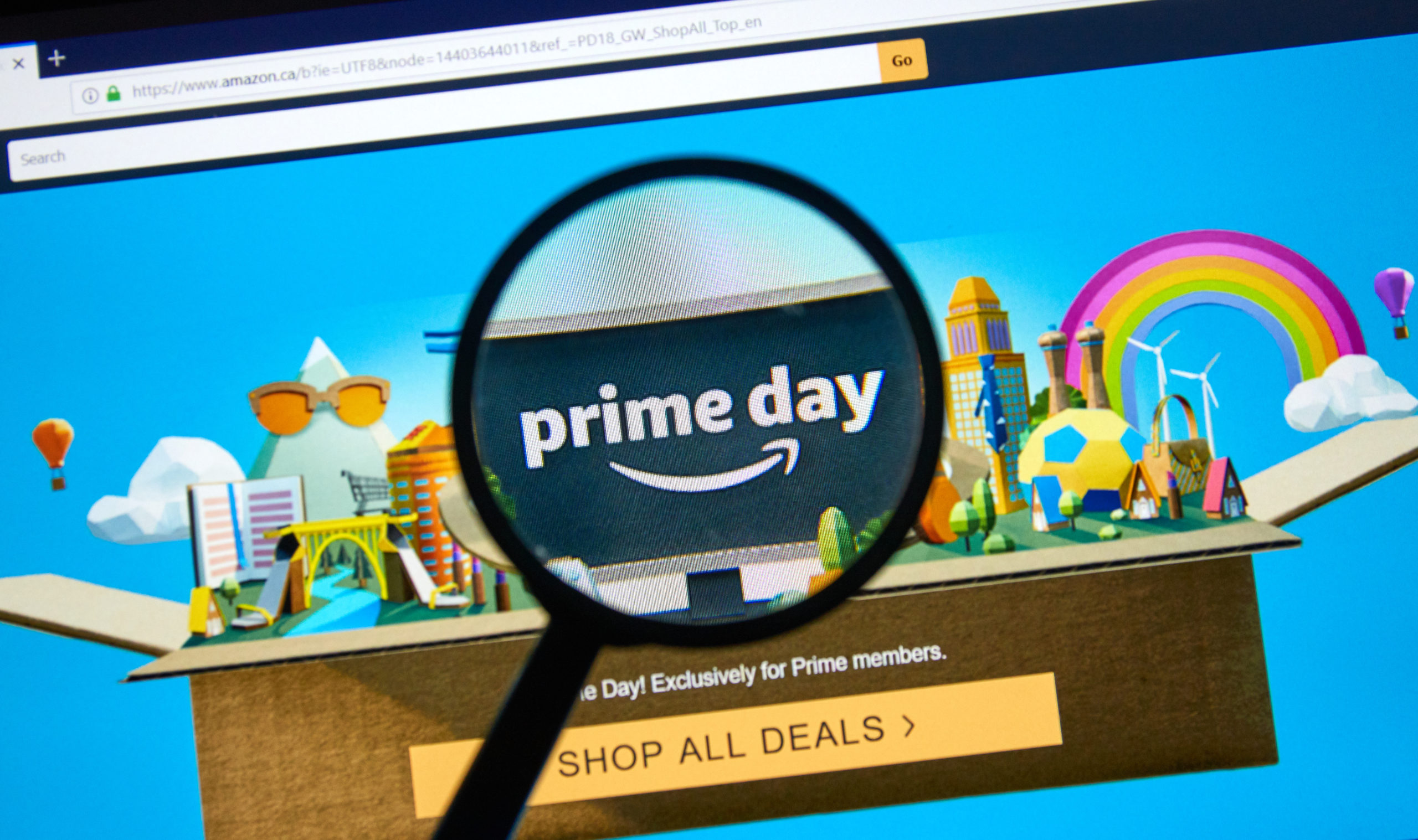
On Monday, we presented our COVID 3 study – “Radio’s 2020 Holiday Road Map” – to an eager group of radio broadcasters all over the States. Produced in collaboration with the RAB, this study was laser-focused on helping radio understand the environment we’re heading into this quarter. The holidays mark the most important time of the year for business, and the stakes are even higher during the pandemic, and subsequent economic crisis we’re facing.
And one of the key takeaways from this study of more than 27,000 respondents collected thanks to more than 350 stakeholder radio stations, we’ve got a great look at the challenges – and the opportunities – presented by this unique set of circumstances.
For many radio stations and the retailers in their communities, it’s D-Day, crunch time, zero hour – a moment that may determine many people’s futures.
One thing we know for sure: this holiday season will be unlike anything we’ve seen before. The RAB calls it “business unusual,” an apt way to describe the unpredictable retail and economic environment that radio and retail are facing in Q4.
Nothing and no one are immune. We know, for example, that Black Friday has been disrupted big-time. Yes, there will still be die-hards who camp out all night at appliance and big box stores. But the overall level of in-store volume for an event that used to thrive on crowds and chaos will be markedly diminished.
Conversely, Cyber Monday will do very well, perhaps setting shopping records this year. Even pre-pandemic, holiday shopping was gravitating to keyboards rather than inside brick and mortar stores. Now, thanks to COVID, more and more consumers will be shopping on their screens in the relative safety of their homes.
And that brings us to Amazon, Walmart, and other mega-brands that have wisely built and effectively marketed robust e-commerce infrastructure. Amazon really started it all, and everyone else is playing catchup. In recent years, Prime Day shopping has been nothing short of meteoric.
Actually, Prime Day is now two days – 48 hours of relentless online shopping. And last year, this Amazon event rivalled all of Cyber Monday’s unique visitor levels. Here’s the trend line on Prime Day sales, excluding 2020, which took place on the 13th and 14th – yesterday and Tuesday:
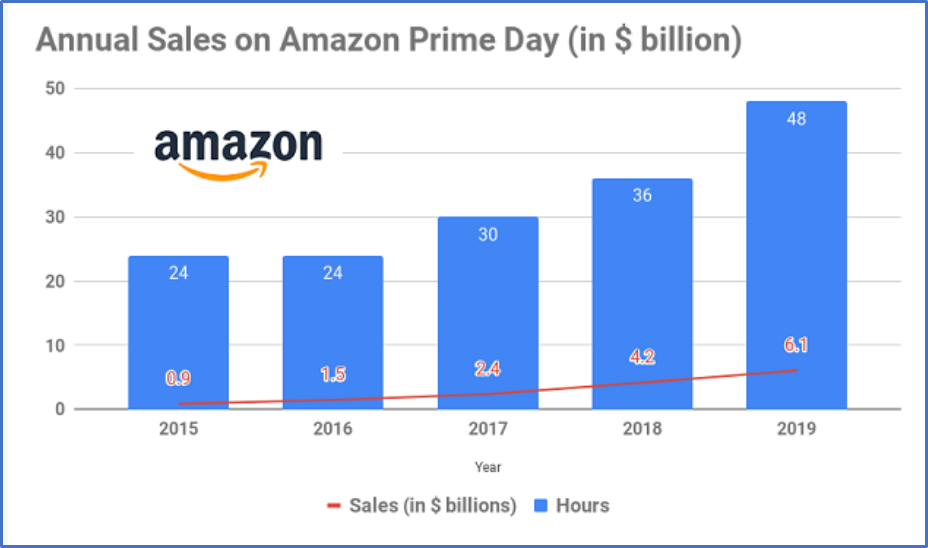
Never content to rest on its laurels, Amazon continues to tweak Prime Day, looking for new and different ways to engage (and entertain) consumers of all strata.
If you followed Prime Day on the Amazon app, you watched a live video stream that resembled at QVC real-time approach to product deals. And you could swipe to explore other offers and product categories. Many of the videos were hosted, and that helped keep the energy flowing. I spent some time on the app, and it was captivating looking for products and deals of interest. The “live” aspect made it interesting, including the running totals on inventory and item availability:
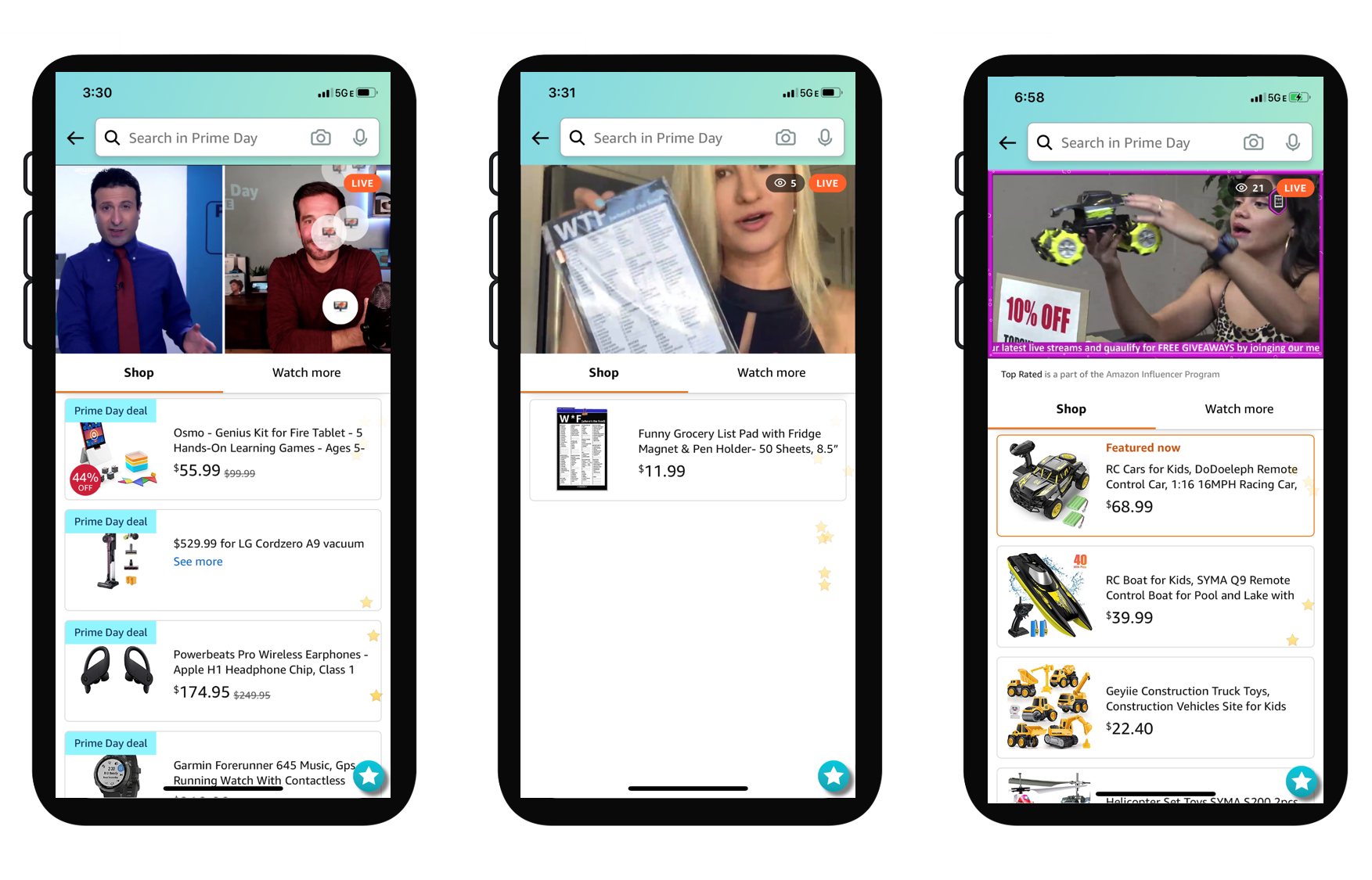
But as complex as this multi-level production looked on the app, Amazon also went “old school” on Prime Day this year. While many people have become very comfortable on their phones, tablets, laptops, and desktops scanning for deals, others may be more traditional. For Amazon, their target audience is anyone with a pulse – and a credit card.
Case in point: They’re sending out catalogues. Holy Sears Roebuck!
Talk about going full circle. But it’s another point of attack for the online retailer that has its sights set on taking over the world. This catalogue – mostly aimed at kids – came in the mail this week – yet another way for his household to decide on which items and sales they’re interested in.
The catalogue came with stickers, mazes, and other activities – more multi-generational targeting for this year’s Prime Day.
But now that Amazon’s multi-media shopping event is in the rear-view mirror, what can we expect this holiday season? How will radio fare? And what all those local businesses trying to duke it out against the likes of Amazon, Walmart, Best Buy, and the other mega retailers?
In our study, there are two countervailing forces at work. First, a majority of respondents tell us that half or more of their holiday shopping this year is expected to be online. And as importantly, two-thirds tell us they feel it’s important for them to shop locally and support small businesses.
Can both things be true? Absolutely. As more and more consumers are shopping from the comfort (and safety) of their homes, they still want their dollars to stay in their local communities.
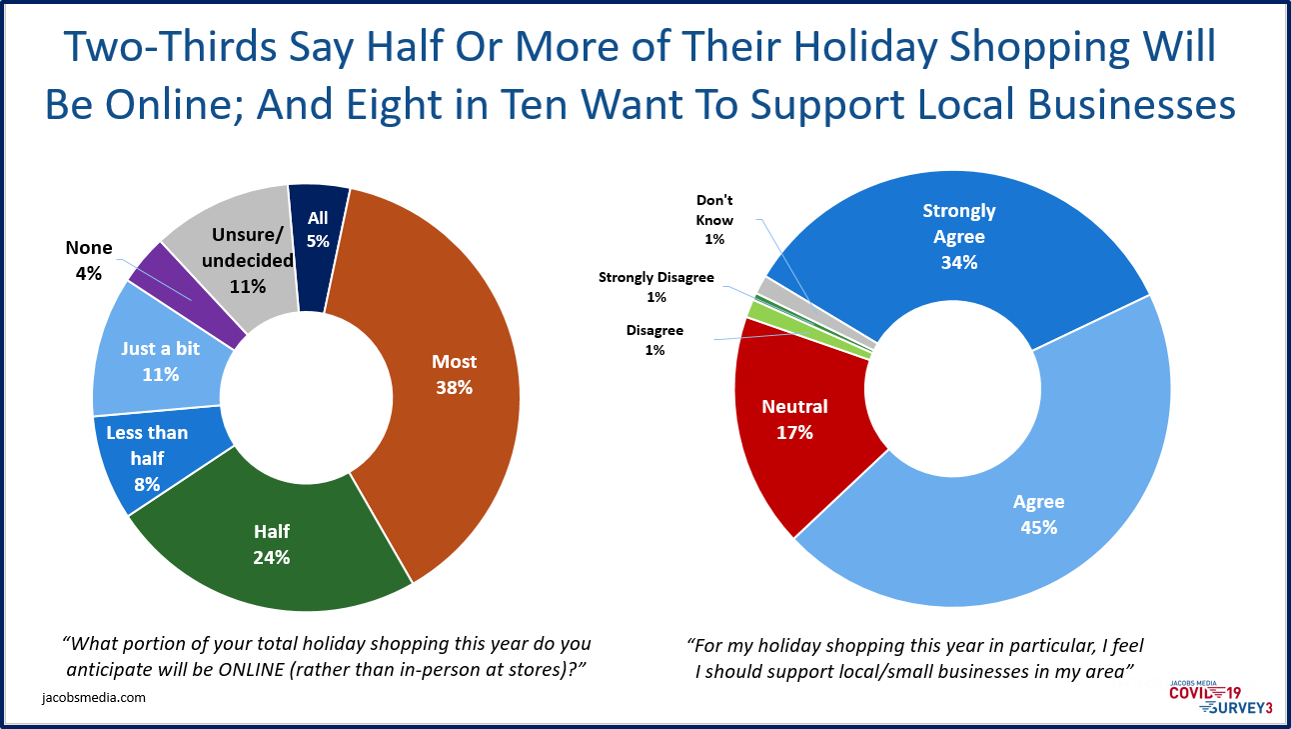
In any other year, it makes sense for broadcast radio stations and their audiences to keep their dollars at home. This year, thanks to the maturity of behemoths like Amazon and the ravages of the pandemic, it’s an imperative.
It’s not just a good idea for local radio stations to support local businesses. It is a way for broadcasters to ensure these hometown retailers survive 2020.
And that’s why I was heartened to see a long-broadcaster take a stand – not against Amazon, but for his Main Street clients. The station is in Watertown, New York, market #258, a city of less than 30,000 people that is physically closer to Canada than it is to Broadway.
Community Broadcasters is owned by savvy veteran radio guys, Bruce Mittman and Jim Leven. And earlier this week, Leven took his stand in 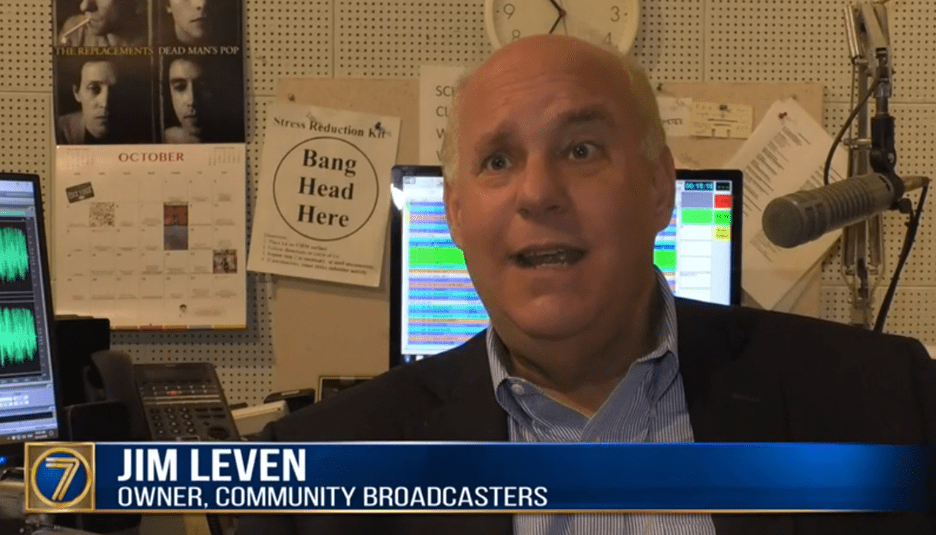 support of local businesses. And it resonated.
support of local businesses. And it resonated.
You can watch WWNY-TV’s coverage here.
In the story, Leven echoes what we saw in the COVID 3 study:
“The connective tissue of a community is its small business community. That’s what radio is for, supporting our community, so we’re here.”
Later in the story, there’s a key point that echoes our COVID 3 research. It is made by local boutique owner, Ashley Scanlin. She may own a small business in a small town, but she is serving her customers with safety and convenience measures that are now top shopping priorities:
“We do have online shopping. We also have in-store pickup. So, if you’re still a little weary about going in and hanging out in the store, trying stuff on, we do offer that.”
She’s on the right track, but thousands of retailers will be playing from behind this season. As we head into this all-important stretch run, these are areas in which radio broadcasters can work with local businesses to help them step up these safety services:
1. Share the research with them – The idea behind the COVID 3 study was to arm radio sellers with information they can pass onto hometown businesses about what matters to shoppers. We learned the holiday shopping season has already started for some consumers, and that the in-store safety experience truly matters to them. The hierarchy on the chart below, for example, lays out the consumers’ top concerns, many of which revolve around safety. And by the way, women are more sensitive to all these issues than are men. You can access our deck here.
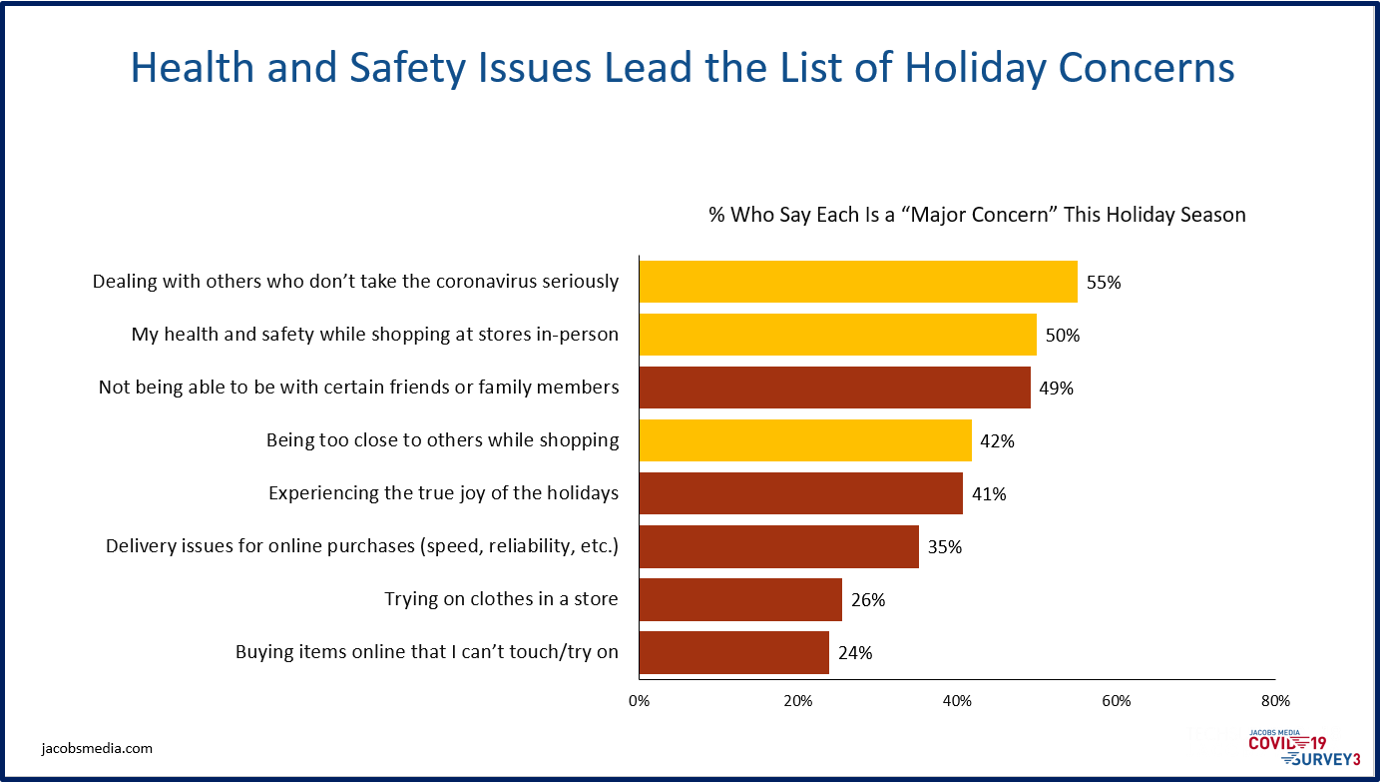
2. Help them build digital assets – Many broadcasters now have personnel with the capabilities to design websites, assist with e-commerce, and manage email database programs. Offering their services to retailers and local businesses that haven’t moved as quickly as necessary in the digital commerce space can be a difference-maker. Or partner with a local digital agency to collaborate on providing digital commerce know-how.
3. Get the word out – As Community Broadcasters are doing in Watertown, and as many radio broadcasters did especially when the lockdowns began, use your megaphone to promote small and local businesses is a no-brainer. And it will position your station or your group for 2021 when we try to get back to some semblance of “normal.” It’s not about discouraging listeners from using their Amazon Prime memberships; it is about reminding them of the importance of shopping local.
In an ironic way, thanks to COVID, perhaps we now have more clarity about what matters, as well as a pathway forward. Maybe there’s been a reawakening about what’s important, especially as we head into the emotions and traditions of a holiday season that promises to be like no other.
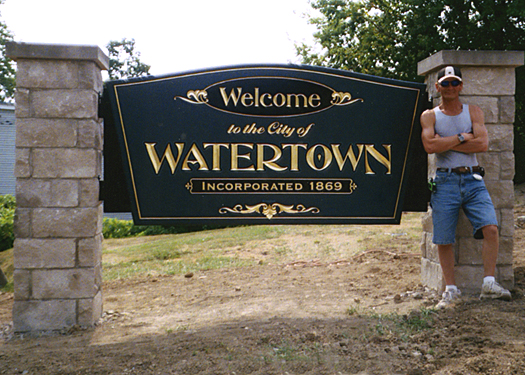
In recent years, I have had many people tell me that “local” is a radio myth, a mirage that doesn’t matter anymore.
I’ve heard that because people listen to syndicated shows hosted by national talent, “local” has lost its relevance.
I don’t buy it. Just as the pandemic has disrupted our lives in profound ways, so has it shifted our thinking to reprioritizing our lives, our careers, our missions, and our purpose.
We can make a difference in how this all sorts out. If a committed and passionate local radio broadcaster can have an impact in a market like Watertown, it can happen anywhere.
It’s that kind of year.
Download our COVID 3 deck “Radio’s 2020 Holiday Road Map” here.
Thanks to the remarkable Jay Kruz.
- For Radio, Will It Be Christmas In April (And Hopefully, May)? - April 21, 2025
- Media And Technology In 2025: Believe It Or Not! - April 18, 2025
- In Radio, You Just Never Know - April 17, 2025




Great message. We ran the same Don’t Do it actually ript in Northwest PA. The message was written by ENS on Sales and they shared it on their email blast last Thursday.
Thanks for checking in on this, Jim.
Local radio DOES exist and IS important. Just ask Cox Media Group in Dayton. We now are even doing local news 24 hours a day weekdays on WHIO Radio. Our trackers on the music stations sound local, act local, talk local. Why? Most of us ARE local and the few who are from out of town have been IN town…seen it, and met the listeners. Let everybody else be national. We like it local here.
Kevin, I think it’s like this everywhere but especially in older markets like yours, mine (Detroit), and places where many people living there grew up there. Thanks for sharing thee story, hopefully inspirational to others reading this blog.
Excellent piece, Fred, and congratulations Jim Leven and his team reminding us why radio is STILL so important. (Would that every station could have someone with the heart for both radio and his community that Leven has at its helm.) As you said, if this horrible pandemic has truly “shifted our thinking to reprioritizing our lives, our careers, our missions, and our purpose,” then maybe some good will still come out of it. And maybe radio will once again look a little closer to the friend and local “champion of the community” it once was.
Dave, in some strange way, this pandemic is trying to bring us back to our roots, our essence – if we take the time to hear its message. Appreciate the comment.